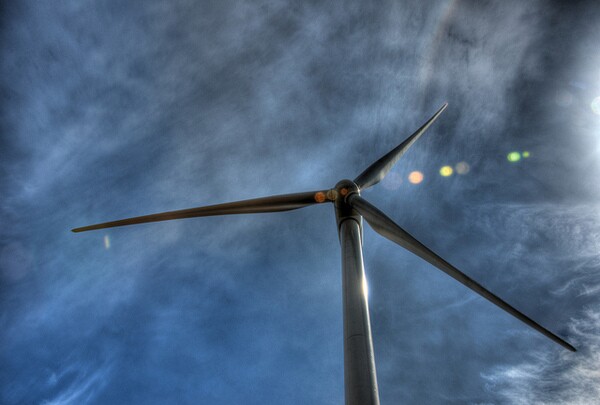Feds Fund Research Into Taller Wind Turbines

The U.S. Department of Energy announced Thursday it's plowing $2 million into two groups working on ways to build wind turbines that are one and a half times taller than current designs.
The intent is to harness winds at higher altitudes, which are often stronger and steadier than more turbulent winds closer to the ground. Making wind turbine supports taller would also allow longer rotor blades, which can drive bigger turbines.
Onshore wind turbines installed in the U.S. in 2013 had an average hub height of 80 meters, or about 260 feet. DoE grant recipients Keystone Towers of Massachusetts and Iowa State University are working on separate technologies that could result in sturdy, relatively inexpensive wind turbine towers as tall as 120 meters, or about 400 feet.
Defining terms here: "hub height" is the height of the tower holding up a wind turbine measured from the ground to the point at which the rotor blades are attached. If a 120-meter tower is fitted with rotor blades that sweep an area 100 meters in diameter, those blade tips will reach 170 meters above the ground at the highest point of their arc. (120 meter hub height plus 50-meter blade length.)
That's 560 feet, more or less, 120 feet taller than L.A.'s City Hall. (Or if you want a more wind-country comparison, we could see new turbines in San Gorgonio Pass with hub heights six stories taller than the 330-foot-tall Morongo Casino tower, and blades that reach a point 15 stories higher than that.)
Rotors with a diameter of 100 meters or so catch more wind energy, and can therefore drive turbines with capacities as high as 7.5 megawatts, or even 10 megawatts. The average capacity of onshore wind turbines built in the U.S. in 2013 was just under 2 megawatts.
An increasing number of offshore wind turbines have hub heights around 100-120 meters and rotor diameters of 100 meters or so, with turbine capacities between 7 and 10 megawatts. But the techniques used to build those taller offshore turbines don't necessarily translate to onshore applications. Building towers strong enough to hold up turbines weighing several hundred tons isn't cheap.
Offshore construction is really expensive, and even a costly tower might account for just a small fraction of installation costs. Onshore, however, the basic costs of construction are much lower, and taller towers eat up a much larger percentage of a construction budget, making taller turbines less competitive.
Massachusetts-based Keystone Towers is exploring a spiral welding technique that may allow on-site fabrication of tubular steel towers that are 40 percent lighter than those currently used,which would save on both materials and shipping costs. Iowa State is designing a modular hexagonal concrete and steel design that would allow shipping those tall towers to a project site in pieces, where they would be assembled like building blocks.
"Through innovative construction processes that will cost-effectively manufacture taller wind turbine towers, these projects in Iowa and Massachusetts will help reduce the cost of wind energy and expand the geographic areas where wind turbines can successfully be deployed in the US," said the Department of Energy in a press release.
What about wildlife impacts? Though an increase in tip height from around 300 to around 600 feet may not seem like much when birds have the whole rest of the sky, that increase could mean that newer turbines take up more of the local migratory corridor, especially for smaller birds. The U.S. Geological Survey reports that most small migrating birds seem to travel at altitudes between 500 and 1,000 feet above the ground. If that's the case, then nudging onshore turbine hub heights up to 120 meters could mean that turbine blades start swinging into that favored migration altitude.
Between that and the possibility that taller turbines could make wind energy economical where wind speeds closer to the ground wouldn't support it, those more elevated rotor blades might indeed have a serious impact on wildlife.
The grant was made by the Department of Energy's Office of Energy Efficiency and Renewable Energy.


